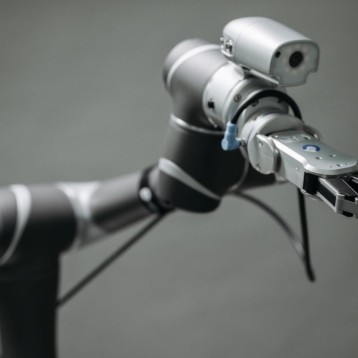Although Jellyfish have been effecting many areas across the globe (some scientists suspect their increase in numbers has to do with global climate change and a sharp drop in its natural predators), in South Korea these creatures have become more than a simple nuisance. Over 2000 people have been treated after getting stung by Jellyfish last year and a child was even reported to die from his injuries, not to mention millions of dollars lost due to medical costs and fishing industry damage caused by Jellyfish.
To combat this problem researchers from the Korea Advanced Institute of Science and Technology led by Associate Professor Hyun Myung, developed the Jellyfish Elimination RObotic Swarm (or simply JEROS). This new series of water robots have been designed with one task in mind – seek and destroy large numbers of Jellyfish.
The team have been working on the robots since 2009. Each robot has two cylindrical bodies that keeps it afloat and also includes motors which move forward and backwards and allow the robot to spin as necessary. Using GPS and inertial navigation system the lead robot is guided by a human controller to a location at sea where suspected Jellyfish are located, while the rest of the robots communicate with it wirelessly and keep moving in formation, hunting for Jellyfish using built in cameras. The robots use a combination of attached nets to capture Jellyfish and a high speed propeller to grind the Jellyfish instantly. Moving in formation a group of JEROS units can eliminate several tons of Jellyfish each day – making them potentially one of the best methods for combating this nuisance.
However not everybody is so certain that this is the best way to combat the problem. jellyfish biologist Rebecca Helm notes on her blog that the dead Jellyfish will either sink to the sea floor and contaminate it or – worse – it may wash onto beaches, where the disembodied tentacles will still sting people.
–
–
JEROS robots at sea in formation











